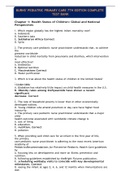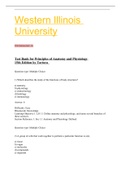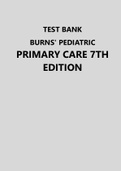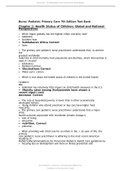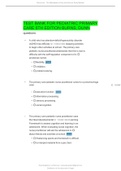NR 602 (NR 602)
Chaminade University
All 50 results
Sort by
BURNS' PEDIATRIC PRIMARY CARE 7TH EDITION TESTBANK VERIFIED A+
Exam questions with answers and explanations
Burns-Pediatric-Primary-Care-Burns-Pediatric-Primary-Care-7th-Edition-Test-Bank7th-Edition-Test-BankBurns-Pediatric-Primary-Care-7th-Edition-Test-Bank
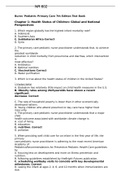
-
NR 602 - Burns' Pediatric Primary Care 7th Edition Test Bank
- Exam (elaborations) • 135 pages • 2022
-
- $13.49
- 1x sold
- + learn more
Burns' Pediatric Primary Care 7th Edition Test Bank Chapter 1: Health Status of Children: Global and National Perspectives 1. Which region globally has the highest infant mortality rate? A. Indonesia B. Southern Asia C. SubSaharan Africa Correct D. Syria 2. The primary care pediatric nurse practitioner understands that, to achieve the greatest worldwide reduction in child mortality from pneumonia and diarrhea, which intervention is most effective? A. Antibiotics B. Optimal nutrit...
Burns' Pediatric Primary Care 7th Edition Test Bank

-
final Test Bank Pediatric Primary Care 6th Edition Burns, Dunn, Brady. very correct
- Exam (elaborations) • 169 pages • 2021
-
- $9.49
- + learn more
. A child who has attentiondeficit/hyperactivity disorder (ADHD) has difficulty stopping activities to begin other activities at school. The primary care pediatric nurse practitioner understands that this is due to difficulty with the selfregulation component of A. emotional control. B. flexibility. Correct C. inhibition. D. problemsolving. 2. The primary care pediatric nurse practitioner cares for a preschoolage child who was exposed to drugs prenatally. The child bites other ch...
final Test Bank Pediatric Primary Care 6th Edition Burns, Dunn, Brady

-
NR 602 - FINAL TEST BANK PEDIATRIC PRIMARY CARE 6TH EDITION.
- Exam (elaborations) • 169 pages • 2021
-
- $15.49
- + learn more
NR 602 - FINAL TEST BANK PEDIATRIC PRIMARY CARE 6TH EDITION. / NR 602 - FINAL TEST BANK PEDIATRIC PRIMARY CARE 6TH EDITION. Questions 1. A child who has attentiondeficit/hyperactivity disorder (ADHD) has difficulty stopping activities to begin other activities at school. The primary care pediatric nurse practitioner understands that this is due to difficulty with the selfregulation component of A. emotional control. B. flexibility. Correct C. inhibition. D. problemsolving.
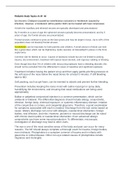
-
NR 602 - FINAL STUDY GUIDE.
- Exam (elaborations) • 40 pages • 2021
-
- $15.49
- + learn more
NR 602 - FINAL STUDY GUIDE. / NR 602 - FINAL STUDY GUIDE. Pediatric Study Topics ch 35- 36 Eye disorders: Chalazion (caused by noninfectious occlusion) or Hordeolum (caused by infection). However, a hordeolum will be painful. Both can be treated with heat compresses. At birth the maxillary and ethmoid sinuses are typically developed and pneumatized. By 9 months to a year of age the sphenoid sinuses typically become pneumatized, and by 5 years of age, the frontal sinuses are pneumatized.
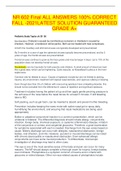
-
NR 602 Final ALL ANSWERS 100% CORRECT FALL -2021LATEST SOLUTION GUARANTEED GRADE A+
- Other • 41 pages • 2021
-
- $18.49
- + learn more
Eye disorders: Chalazion (caused by noninfectious occlusion) or Hordeolum (caused by infection). However, a hordeolum will be painful. Both can be treated with heat compresses. At birth the maxillary and ethmoid sinuses are typically developed and pneumatized. By 9 months to a year of age the sphenoid sinuses typically become pneumatized, and by 5 years of age, the frontal sinuses are pneumatized. Frontal sinuses continue to grow as the face grows and may be larger in boys. Up to 10% of the p...

That summary you just bought made someone very happy. Also get paid weekly? Sell your study resources on Stuvia! Discover all about earning on Stuvia

